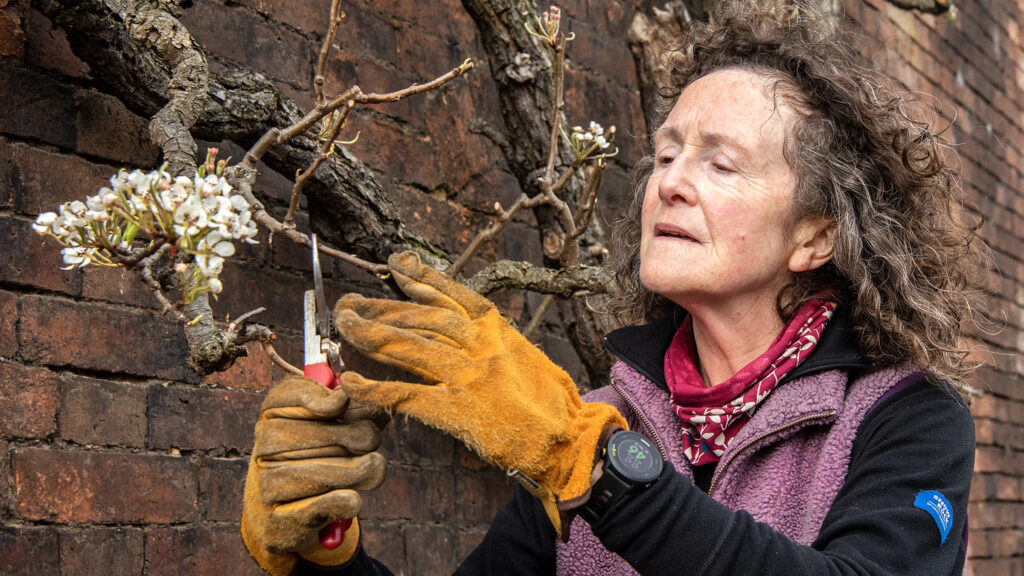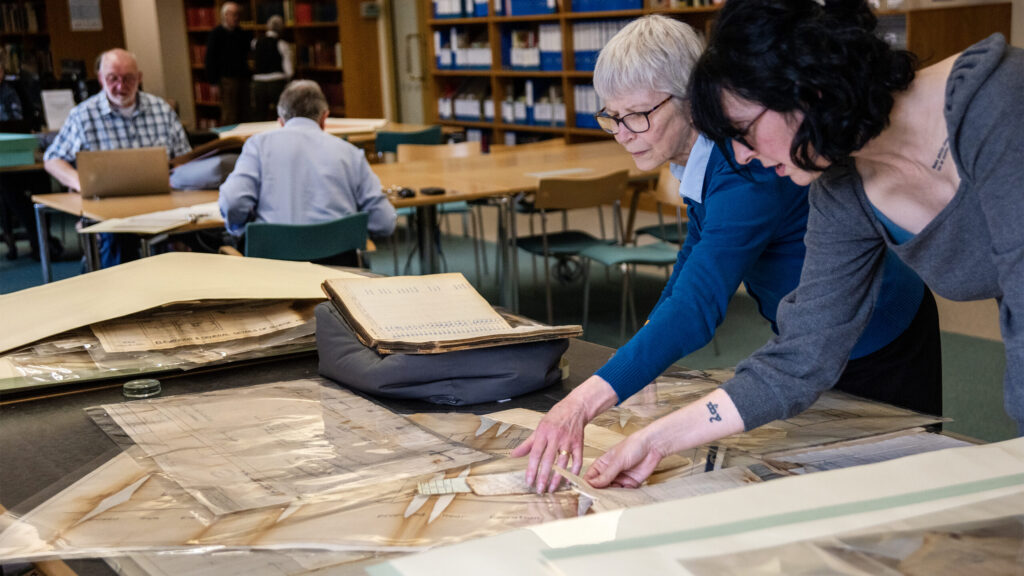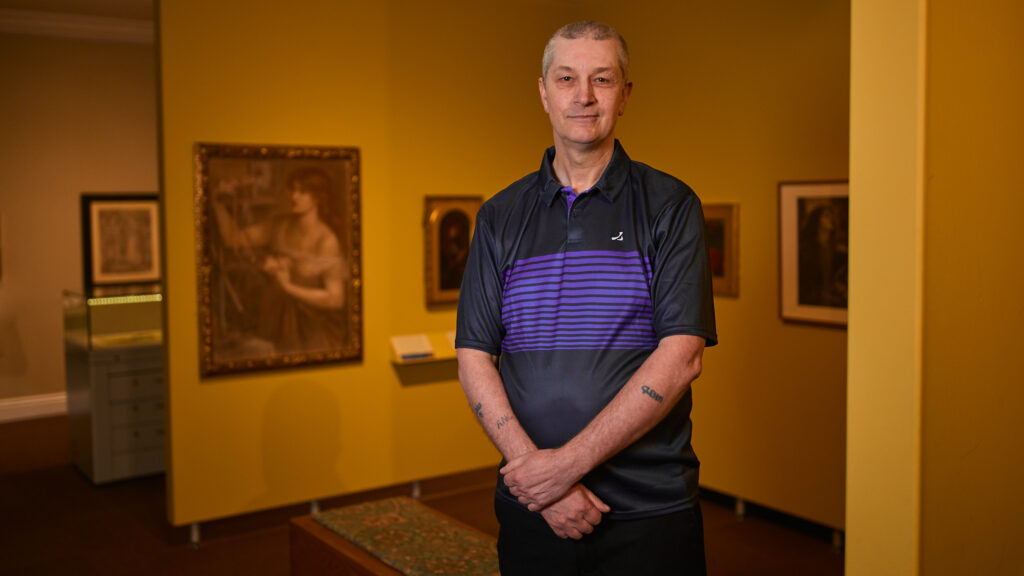Enjoy this article?
Most Museums Journal content is only available to members. Join the MA to get full access to the latest thinking and trends from across the sector, case studies and best practice advice.
When London’s Courtauld Institute of Art began a project to catalogue and photograph the one million-plus images in the Conway Library, it had the modest aim of working with about 200 volunteers to support the initiative.
Five years on and with the project complete, 14,000 volunteers have been involved – 2,000 in person and the rest participating remotely online. But this high level of engagement is not the norm, with reports pointing to a fall in volunteering numbers in the UK across a range of sectors.
A recent survey by the NCVO, an organisation that supports volunteering, found that the proportion of the UK population that had volunteered at least once a month in 2021-22 was 16%.
This was down from about 23% in 2019-20, reflecting the impact of the Covid-19 pandemic. The NCVO says that volunteer participation has not fully recovered since then.

But despite these alarming figures, the picture is more complex in museums. There are reports of reduced rates of volunteering, but many cultural organisations have bucked the trend and run successful programmes.
Nevertheless, the impact of the pandemic on volunteering, with the added challenge of the cost-of-living crisis, is making life difficult for those responsible for recruiting and retaining volunteers.
Leigh Venus, the RNLI heritage development manager (north) and the manager of the RNLI Grace Darling Museum in Bamburgh, Northumberland, says: “At the museum I’m based at, and at the museums I oversee for the RNLI, we have experienced a double hit to volunteering since Covid.
“Many volunteers chose not to return to our sites after lockdown through a combination of personal safety concerns and the lockdown itself being a natural break point for many of them to wrap up their time volunteering with the organisation.
“The cost-of-living crisis also means many people who may have retired and found the time to volunteer are now having to return to work or continue working past their expected retirement age.
“People who are working and may have found time to volunteer in their spare time are having to devote this time to working longer hours or second jobs, further limiting the pool of volunteers available to us.”

Many other museums report similar challenges. Tyne & Wear Archives & Museums (Twam) says its volunteer numbers have not returned to pre-Covid levels, down from 375 in 2019 to 268 in 2022.
But the organisation is committed to making volunteering work and is part of the Arts Council England-funded Volunteering Futures scheme, which is helping it reinvigorate its offer.
This includes revising its processes and procedures, helping staff think about how volunteers can support their work and supporting staff through training to enable them to support volunteers better.
“Volunteers play a huge part not only in helping us to deliver the service we provide to our communities, but also in connecting our museums more closely with local communities and bringing different experiences and insight to the work we do,” says a Twam spokesperson.
“We want to continue to develop what the volunteer journey might look like and develop new types of roles that match with the skills and interests that people want to develop, including remote and digital or more social event mass-participation-type volunteering.”
Organisations in Cumbria are also part of the Volunteering Futures scheme through a project called Helping Hands. Led by the Cumbria Museum Consortium, it involves 45 partners.
The aim of the two-year project is to break down the barriers to volunteering in Cumbria’s cultural sector by offering one-to-one mentoring, training and other support.
Kate Parry, the head of partnership at the Cumbria Museum Consortium, says that while museums in larger population centres, such as Tullie in Carlisle, have seen their volunteers return since Covid, the picture across the region is patchy and unpredictable.
But overall, the Helping Hands programme has been successful in attracting young people, those with disabilities and people who are neurodivergent.
“Helping Hands is about diversifying volunteering, and we have done lots of work identifying the barriers to volunteering and breaking these down,” says Parry.

“But looking after volunteers well does require dedicated capacity – and that is one of the big barriers that we come across in museums.”
The importance of having dedicated staff members to effectively manage volunteering is echoed across the sector.
“We have seen the number of volunteers increase recently, but I feel this is down to having an additional, purely volunteer-focused staff resource,” says Ben Marsh, the programme development manager (volunteering) at Barnsley Museums, which includes five venues and an archive service.
“This has enabled us to have a far more flexible offer, and to engage with groups with which we hadn’t previously, while offering support to the wider team to feel more confident in volunteer engagement.”
Bradford Museums and Galleries also has a successful volunteering programme led by a dedicated staff member.
The service had no volunteers before the pandemic, but now has more than 60 across it four sites. Sonja Kielty, Bradford’s volunteer coordinator, used the pandemic to develop a strategy for the whole programme, which included reaching out for support from organisations such as the Heritage Volunteering Group.
“We have been successful because people have respect and love for the four museums in Bradford,” she says. “And I shout about what we are doing all the time – it looks fun, it is fun and people are learning.”
The cost-of-living crisis and the long tail of the pandemic are still proving significant impediments to recruiting and retaining volunteers.
But some in the sector believe that there are structural and systemic issues that will remain, even when the economic outlook improves. This is because attitudes to volunteering have shifted, with people seeking more-flexible roles that fit around their availabilities and interests, connect them to a larger sense of purpose, and make a real impact.
The Heritage Volunteering Group’s recent Creating Capacity report argues that organisations need to think more strategically about volunteer involvement, invest in participation and provide the leadership to create innovative models of volunteering that would enable the sector to thrive. Unless this happens, finding and retaining volunteers will remain challenging.
The Helping Hands projects will feature in a session on the future of volunteering at this year’s Museums Association Conference, which takes place in Newcastle-Gateshead on 7-9 November
Volunteering trends from the Heritage Volunteering Group
- Volunteering rates appear to be lower than they were before the pandemic.
- The cost-of-living crisis is a major issue, particularly when coupled with organisations not paying expenses (something that is more common than the Heritage Volunteering Group would like).
- People want to volunteer on their terms, which requires a more flexible approach to volunteer involvement – rigid set ups around recruitment and volunteering times are creating barriers to participation.
- Older volunteers are taking on more “grandparent duties”, which results in them having less time to devote to volunteering roles.
- Clinical vulnerability is an issue for some, with Covid still in circulation.
- There is a shift to values-based volunteering, which is something the heritage sector doesn’t tap into.
- There is more hyper-local volunteering, meaning people are less likely to travel in order to volunteer.
- With tightening budgets, capacity is becoming restricted. This means those who might normally supervise volunteers as part of their wider role may not be doing so.
- For a range of reasons, not all roles have been remobilised since Covid meaning there aren’t as many opportunities for people to volunteer.
- Some organisations are still restricting the number of people that can be in a room at the same time, which restricts volunteer capacity – archival roles are an example of this.
Most Museums Journal content is only available to members. Join the MA to get full access to the latest thinking and trends from across the sector, case studies and best practice advice.